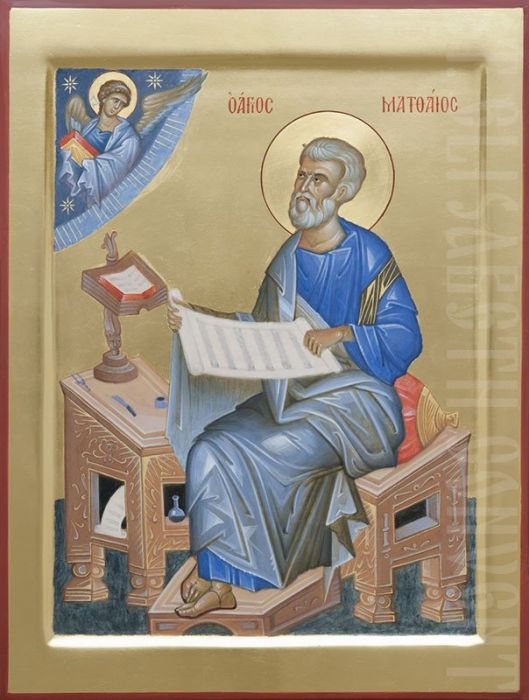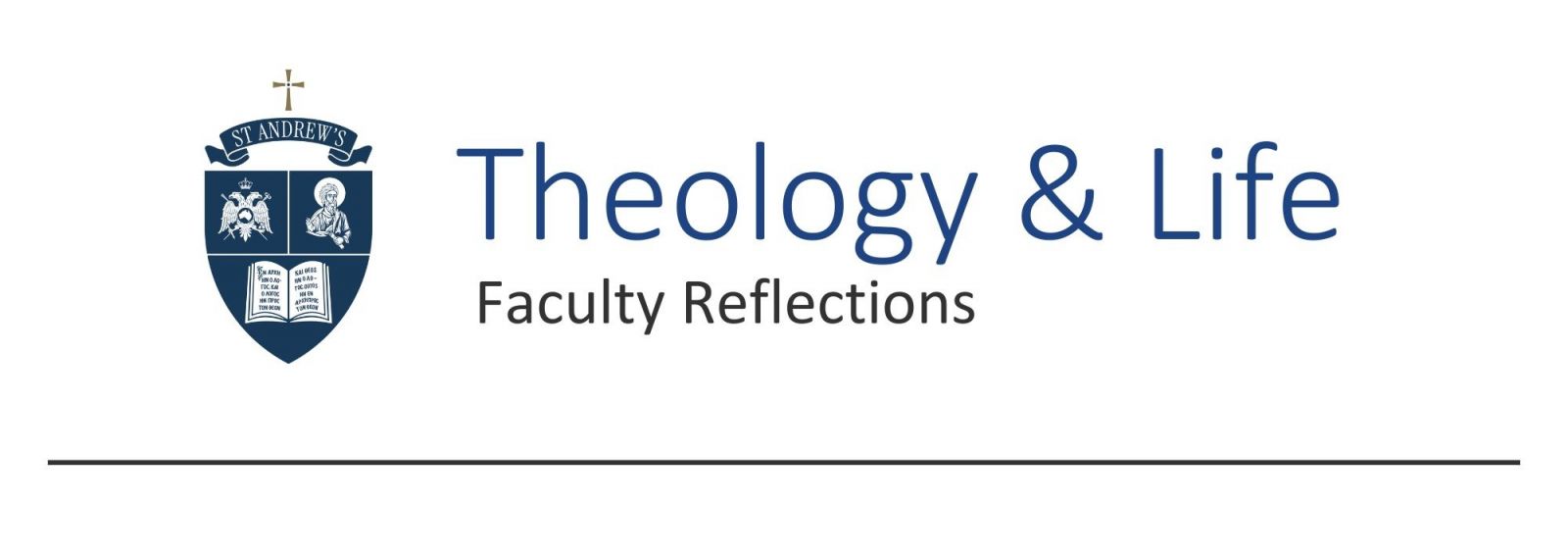- Home
- About us
- Students
- Courses
- Research
- Library
- News & Events
- Gallery
- Contact
- Our Blog
Latest News

The Kingdom of God in
the Gospel of Matthew - Part 2

by Dr Lydia Gore Jones (Senior Lecturer in Biblical Studies)
In the first part of this article, I have argued that Matthew has adopted the Kingdom theme in Mark and fully expanded it and even made it the central scheme to shape his narrative, which can be seen especially in the five-fold structure of the Gospel and a concentration of Jesus’ teachings and parables which all revolve around the nature of the Kingdom and the manners of life therein.
What particularly makes Matthew a Gospel about God’s Kingdom is the carefully designed beginning (chs 1-2) and ending (chs 27-28). They show us clearly how the kingdom theme functions distinctly as a structuring principle in Matthew.
Matthew begins with a highly schematised genealogy of Jesus followed by his version of the nativity narrative. The genealogy serves at least two functions. On the one hand, it sums up the history from Abraham to Jesus the Messiah, and thereby presents the Gospel narrative as a continuation and fulfilment of that history. On the other hand and more relevant to our topic, the genealogy provides kingship and kingdom as a lens, and places it at the beginning; thus it commands that the rest of the narrative be read/heard through that lens. We know that kingship and kingdom is the focus of this genealogy because it is schematised into three stages of fourteen generations each, from Abraham to David the King, from David to the deportation to Babylon, i.e., the loss of the Davidic Kingdom, and from Babylonian deportation to Jesus the Davidic Messiah, the one from God to reclaim the kingdom.
As for the nativity narrative proper, three points can be made that are relevant to our argument. First is Matthew’s scripture-and-fulfilment routine that now has become common recognition. Three direct quotations from the prophets: Isaiah 7:14 (“The virgin shall conceive and bear a son and they shall name him ‘God is with us’”), Micah 5:2 (“And you, Bethlehem, … from you shall come a ruler … to shepherd my people Israel”) and Hoshea 11:1 (“out of Egypt I called my son”) are about a Davidic king who is Son of God, whom Matthew identifies with Jesus. The second point is that the narrative centre in Matthew is Joseph, a “son of David” the King, rather than Mary as in Luke. It is to Joseph that the angel appears to announce the conception through the Holy Spirit; it is Joseph who took the mother and child to Egypt, and Joseph again to take them back to the land of Israel. Thus although both Matthew and Luke narrate the birth of Jesus as a fulfilment of prophecy, Matthew’s nativity story is the one that is shaped by the kingship and kingdom theme. Thirdly, one must notice how Matthew’s nativity story shows the structure of what Joseph Campbell famously called the “monomyth” of the archetypal hero: a miraculous birth, a hidden royal identity, recognition by wizards – Magi in this case, imminent danger from the jealous illegitimate usurper of the throne – in this case, Herod, divine protection and deliverance. It is a clear demonstration of how the kingship theme governs the narrative from its beginning.
Lastly, Matthew’s Passion narrative is closely based on Mark’s, which already presents the kingship theme through paradoxes and tragic ironies. Where Matthew differs from Mark, he adds extra touches to fully highlight the ironic sense. The first aspect of the irony is that Jesus “the King of the Jews”, the rightful judge, is judged by a mere governor. Matthew highlights this by adding the description of Pilate “sitting on the judgment seat” (27:19), which is absent in Mark. Further, Matthew takes over Mark’s contrast between Jesus and Barabbas. The robber, whose name suggests literally “son of the father,” is released, while the true Son is crucified. But Matthew rewords Mark to sharpen the ironic contrast. Some ancient manuscripts call Barabbas “Jesus Barabbas”. Matthew makes Pontius Pilate juxtapose Barabbas with Jesus the true Son of God the Father: “‘Whom do you want me to release for you, Jesus Barabbas or Jesus who is called the Messiah?’” (27:17).
The mocking of Jesus is the third aspect of irony that Matthew inherits from Mark but intentionally underlines its ironic sense. The soldiers put the royal scarlet robe on Jesus, with a thorny crown, and pay him homage – out of cruel mockery, yet paradoxically it reveals Jesus’s true identity as the King. Matthew further increases the irony by adding details to Mark’s account: the soldiers “put a reed” – a mock staff – “in his right hand and knelt before him and mocked him, saying, ‘Hail, King of the Jews!’” (27:29).
The crucifixion is also a royal scene in disguise. The charges placed above Christ, ‘This is Jesus, the King of the Jews,’ speaks ironically the truth; and the two bandits on his left and right also form a vivid visual representation of two royal attendants on each side of an enthroned monarch (27:38).
Matthew also provides a short but powerful ending where Mark lacks. Jesus standing on a mountain, as a new Moses, but also as God commanding new “Joshuas” to “baptise the nations” “teaching them to observe all that I command you,” and promise being with them “always.” The words “I will be with you” and “observe the commandments” echo the beginning of the book of Joshua, where God sends the successor of Moses across the Jordan into the promised land for the establishment of a kingdom for Himself. This scripture allusion completes Matthew’s narrative on a high note about Christ’s kingdom.
Having looked at the Kingdom theme in the structure of Matthew, we can now ask, what are the implications? We can cast our eyes towards the wider canonical context of Scripture. Studies of intertextuality often focuses on how OT scriptures form the meaning of NT writings, Matthew’s Gospel in this case; but it can also inform us about the meaning of Scripture in its canonical shape in light of Matthew’s holistic view of his biblical canon. The kingdom theme, coupled with Matthew’s perpetual concern about the fulfilment of scriptures, strongly demonstrates that he interprets entire Scripture as one prophecy about God reclaiming his kingdom through Israel. Firstly, the fact that Matthew presents Jesus as the second Moses and greater than Moses, the Gospel as a five-fold Torah, the Sermon on the Mount in the manner of the King’s proclamation of the law for citizens of his kingdom reflect backward that Matthew read the Mosaic tradition in Scripture as an account of the establishment of Israel as a nation dedicated to God their King. This notion is well summed up in Exodus:
you shall be my treasured possession out of all the peoples. Indeed, the whole earth is mine, but you shall be for me a priestly kingdom and a holy nation. (19:6)
The understanding, that the Exodus tradition involves the establishment of God’s kingdom through Israel, is corroborated by 1 Peter 2:9:
you are a chosen race, a royal priesthood, a holy nation, God’s own people, in order that you may proclaim the mighty acts of him who called you out of darkness into his marvellous light.
Similarly, the function of Matthew’s allusions to Navi’im (the historical and prophetic books) also shows his understanding of them to be concerned with God’s Kingdom. Not only the Latter Prophets, which Matthew makes use of abundantly in conjunction with his kingdom motif to show their fulfilment in Jesus; he sees the Former Prophets, or the Historical Books, as concerning the kingdom as well. The schematic division of the Genealogy of Jesus into the three sections, each with 14 generations, shows Matthew’s understanding of biblical history as the promise of a kingdom through Abraham, the establishment of a kingdom through David, the loss of Israel’s kingdom in the deportation, and the regaining of the kingdom through Jesus the Christ. In other words, he sees the overarching narrative in Jewish scripture as telling about the King, Kingship and Kingdom.
Scriptures in the Ketubim (the Writings, especially wisdom literature), also show the innate kingdom theme in many if not all of them, because the intertextuality created with Matthew has thrown a particular light on them. The book of Psalms and the book of Daniel, which have significant influences on Matthew, are two conspicuous examples. King, Kingdom and Kinship is the central thread in Psalms through its connection with David and those characteristic Messianic psalms, royal psalms and “God is King” psalms. The Son of Man image and sayings in Matthew, on the other hand, also bring the centrality of the kingdom theme in the Book of Daniel to the fore front.
In conclusion, the centrality of the kingdom theme in Matthew has long been recognised as a key feature of the First Gospel. Matthew adopts the motif from Mark and fully expands it. The kingdom theme, indeed, functions as a structuring device in Matthew, creating coherence and cohesion between diverse parts and materials. On the other hand, an intertextual study of Matthew’s kingdom theme even opens up a wider window unto the vista of the Jewish scriptural canon. What is presented is a coherent narrative about God and His Kingdom. Matthew’s message is that the Kingdom of God that had been promised and anticipated in Jewish scriptures was realised in Jesus Christ, and is to be fully fulfilled at the eschatological end.



.png)